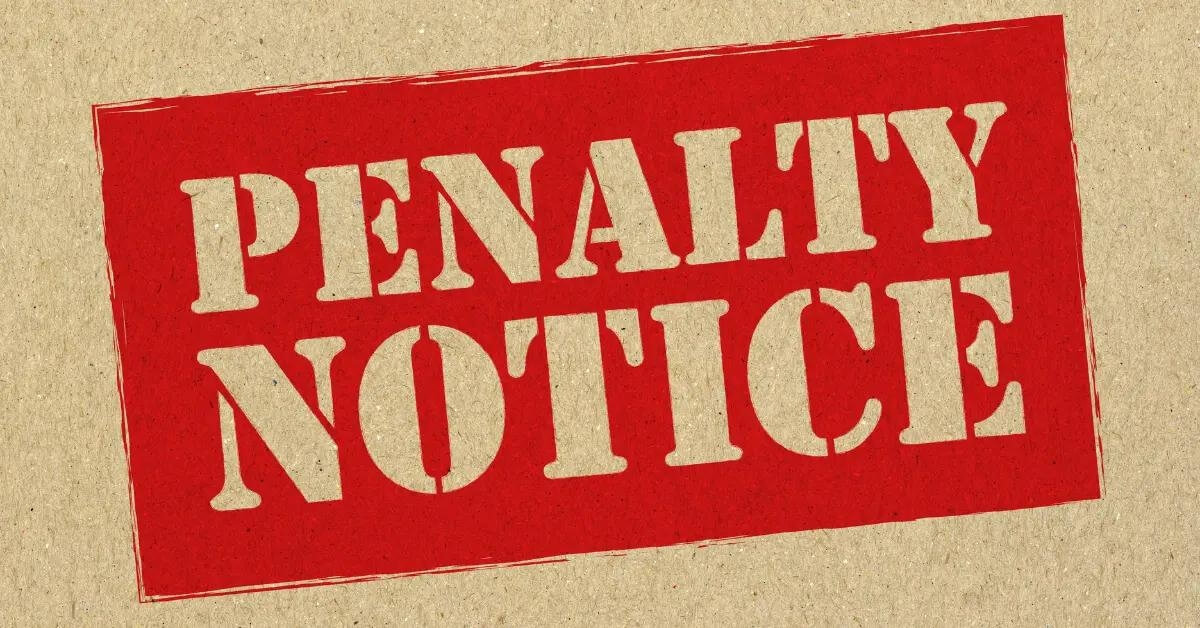When you dreamed of owning your own business, you saw your days filled with doing the things that you love. The reality is a little different. While you do spend part of your day doing the things you love, you spend time as the accountant, handyman, janitor, human resource manager, and the head of marketing. There is one job that can be a little scary and it is a tax expert. That’s why it is important to understand different IRS business forms. Here, we will discuss general IRS business forms that every business owner should know about.
Each year, there are pages and pages of changes in the tax code, which makes it even more daunting. As Congress works to streamline the tax process, it seems to make it even more confusing. You know you have to pay taxes on the profits you earn but you don’t want to pay more than that. One of the best ways to safeguard yourself is with information. Here are eight general IRS business forms that you should know as a business owner.

1. State Taxes, Forms, and Information
Not only do you need to pay federal taxes, but you also need to pay state taxes. You might even need to pay taxes in more than one state, depending on what your company does and where it does business. Each state has its only tax laws and IRS business forms. Here’s a list of state tax offices throughout the United States and links for discovering more information about each one. This information is helpful for navigating relevant IRS business forms.
You can use this information to find the IRS business forms you need in any given state to file for your return. You can even find contact information for each local office so you can ask questions directly. The list includes contact information for Puerto Rico and several types of tax offices if a state has more than one available.
2. Form SS-5, Application for a Social Security Card
This is one of the IRS business forms that deals with Social Security. If you work in the United States, you must have a Social Security number, and in many cases, you need to show your Social Security card to help identify your citizenship status. Today, most babies are issued a Social Security number at birth but that hasn’t always been the case. In the past, parents or the individual had to apply to receive a Social Security number. This form can be used in three distinct situations, including:
- Request an original Social Security card
- Ask for a replacement Social Security card.
- Make corrections to any of the information in your social security record.
Original Social Security Card
To get an original card, you need to show proof of your age, identity, and your status as either a United States citizen or work-authorized immigration status. If you don’t have a DHS work permit and aren’t a citizen, you need to provide a valid reason, not related to work, to need a Social Security card.
Replacement Social Security Card
When requesting a replacement card, you need to provide your identity with one source. Those born outside of the United States must provide proof of current citizenship or work-authorized immigration status.
Changing Information in Your Social Security Record
When you need to correct information on your record, you need to provide proof of who you are, support for the change, and a reason for making the change.
3. IRS Form 1045, Application for Tentative Refund
Are there IRS business forms that allow for refunds? The simple answer is yes. As a business owner, you send payments to the IRS each quarter to cover your tax liability. However, there are instances when you can request a quick and immediate tax refund. Of course, this refund is only allowed in specific and unusual circumstances, such as:
- Carryback of a net operating loss (NOL)
- A claim of right adjustment under section 1341 after you overpay the amount of taxes due.
- Carryback of a general business credit that hasn’t been used.
- Carryback of a section 1256 contracts loss.
Information to Provide and Attach WIth IRS Form 1045
There is some information that you need to share and provide with Form 1045. It varies depending on your filing status and the nature of the credit or loss. Here are some things you may need to send in:
- Send in pages one and two of your 2019 Form 1040 or 1040-SR, if you file as an individual. You may also need to send in Schedules one through three and A, D, F, and J if it’s appropriate.
- Any IRS business forms or schedules form which a carryback occurred, including:
- Schedule C (Form 1040 or 1040-SR)
- Form 3800, General Business Credit
- Form 6478, Biofuel Producer Credit
- Form 6781, Gains and Losses From Section 1256 Contracts and Straddles
- Form 3468, Investment Credit
- Form 461, Limitation on Business Losses.
- Forms 8302, Electronic Deposit of Tax Refund of $1 Million or More
- and others as needed.
4. IRS Form 2553, Election By a Small Business Corporation
Some companies and individuals are eligible to be treated as a corporation. They must have an election to become an S Corporation. IRS Form 2553 reports this election to the IRS. The change in status to an S Corporation can have tax repercussions so the IRS must be made aware of the change.
Who Can Elect to Become an S Corporation?
Only specific companies and individuals can make the switch to an S corporation, and they must meet all these requirements:
- You must have a domestic corporation or it must be a domestic entity eligible to elect to be treated as a corporation.
- You can’t have more than 100 shareholders. For this test, you can count spouses as one shareholder. You can also treat all family members as one shareholder. In all other cases, they are individual shareholders and should be counted as such.
- The shareholders are exempt organizations described in section 401(a) or 501(c)(3), or certain trusts described in section 1361(c)(2)(A), estates, and individuals.
- There can’t be any nonresident alien shareholders.
- You can only have one class of stock.
- The following are ineligible corporations so it can’t be one of these:
- A thrift institution or bank that utilizes a reserve method of accounting for bad debts under section 585.
- An insurance company that pays taxes under the subchapter L of the Code.
- A current or former domestic international sales corporation (DISC).
- If your corporation has ever decided to be treated as a possessions corporation under section 936, it doesn’t qualify.
- You need to change or adopt one of the following as the tax year:
- A tax year voted under section 444.
- The tax year ends on December 31.
- The natural tax year.
- A 52-53-week tax year that ends with one of the other references.
- An ownership tax year.
- Each shareholder must consent as outline in the instructions in Column K.
5. IRS Form 2848, Power of Attorney and Declaration of Representative
You can use Form 2848 to assign someone to act on your behalf with the IRS. This person must be eligible to practice before the IRS. In some cases, you can select a student from a qualified Low Income Taxpayer Clinic (LITC) or Student Tax Clinic Program (STCP). This must be in a special appearance authorization issued by the Taxpayer Advocate Service. Use caution when assigning Power of Attorney to someone since this gives them access to your confidential tax records.
Revocation of Power of Attorney
If you want to revoke this power of attorney and you aren’t ready to name a new one, simply write “REVOKE” across the top page of the form and sign it again. With the revocation annotation across the top, mail or fax this paperwork to the IRS so they’ll remove the representative from your records. There are three locations to send the information and where you send it is based on your location.
Representative Withdrawal of Power of Attorney
Your representative can withdrawal from the position. They simply write “WITHDRAW” on the top page of the Power of Attorney. Next, they sign and date the copy and then mail it to one of the three IRS centers.

6. IRS Form 6252, Installment Sale Income
If you receive income from an installment sale, then you need to report it on Form 6252. Typically, an installment sale is one where at least one of the installments is paid in another year other than the current tax year. There are some special rules that can apply to installment sale income:
Interest
You need to report the portion of the installment payment that is interested in another form. This is true even if the entire payment is interest. In this form, you shouldn’t report interest received, carrying charges received, or unstated interest.
Installment Sales to Parties Related to You
There is a special rule that’s applicable to the installment sale of your property to someone related to you if it’s sold again before all the installment payments are made to you. According to the rule, parties related to you include:
- Spouse
- Child
- Grandchild
- Parent
- Brother
- Sister
- A related corporation
- S corporation,
- Partnership
- Estate,
- Trust.
Sale of Depreciable Property to Related Person Generally
You can’t use the installment method to report the sale if you sell depreciable property to someone related to you. If you can prove to the IRS to its satisfaction that the sale of this depreciable property through the installment wasn’t meant to avoid paying federal taxes, then you might be able to use it.
7. IRS Form 8822-B, Change of Address
This form is a revised version of IRS Form 8822, and Form 8822-B is used to notify the IRS of certain information. This info includes:
- Location of the business
- Address of the business
- The name and identity of the company’s responsible party.
It takes between four to six weeks for the change to take place. Here are some other things to consider.
Prior Names:
You can use line five to notify the IRS of a name change for you or your spouse. Please, remember to notify the Social Security Administration about the name change so that both agencies show the same corrected name. If you don’t, there could be delays in processing your returns.
P.O. Box
You can only use a P.O. Box number in the place of a street address if the Postal Service won’t deliver to your physical address.
Foreign Address
If you live in a foreign country, then you need to show the postal code on your form the exact same way you would when giving the address to anyone else. Also, spell out the full name of the country.
“In Care of” Address
If a third party, such as an attorney or accountant, receives mail on your behalf, you need to put “C/O” in front of the third party’s name and address.
8. IRS Form 8903, Domestic Production Activities Deduction
The Domestic production activities tax deduction (DPAD) was created to give a tax benefit to companies who produced goods within the boundaries of the United States instead of sending production overseas. It was designed to bring manufacturing back to the United States.
You use this form to determine the amount that you can deduct with the DPAD. It’s usually nine percent of the smaller amount of:
- An individual, estate, or trust’s adjusted gross income without the DPAD figured into the mix of other income and its sources.
- The qualified production activities income (QPAI) of your company.
Qualified Production Activities Income (QPAI) is any amount in excess of the domestic production gross receipts (DPGR) over the cost of goods sold allocable to DPGR, and any other expenses and losses that are allocable to DPGR.
Who Must File Form 8903?
Individuals, corporations, cooperatives, estates, and trusts must complete this form to determine their deduction in certain industries. Each of these groups will need additional information from their companies to figure their eligibility and the amount of the deduction. This includes spouses who may need information from each other.
Do these IRS business forms seem overwhelming or confusing? Silver Tax Group understands how much work you need to do as a small business owner, and we’re ready to take over managing your taxes. Our knowledgeable professionals understand all the IRS business forms and new tax laws that seem to arrive in droves each year. Contact us today for an appointment to learn more about the services we offer.








